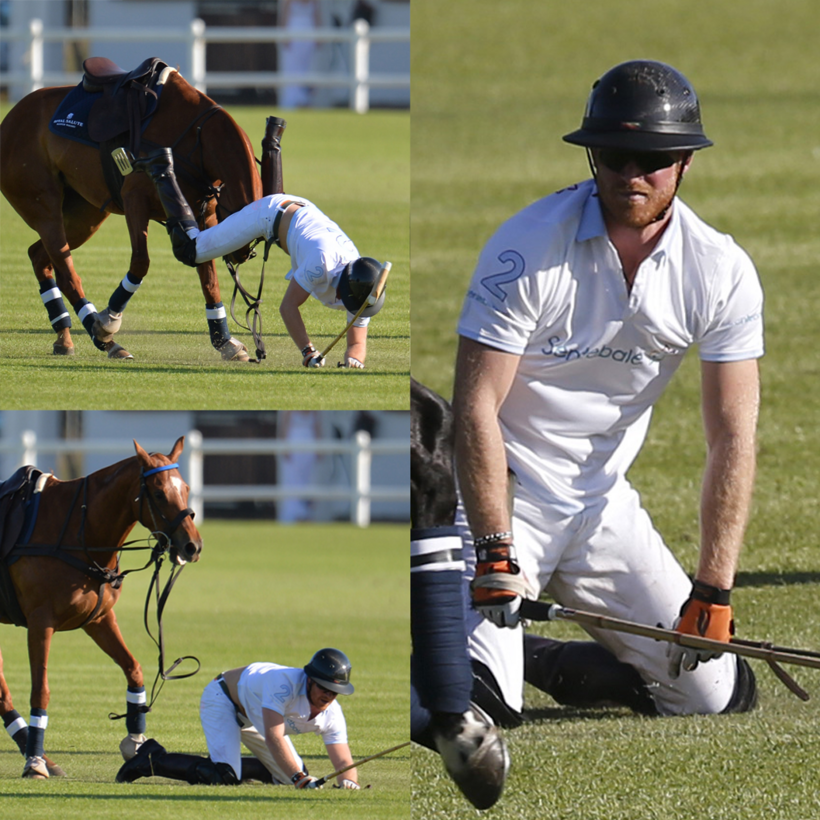For a while there, for just the briefest of moments, it looked as if Prince Harry and Meghan Markle had solved all their problems.
In January, Harry settled his long-running phone-hacking legal action against the publisher of The Sun, receiving an apology and “substantial damages” in the process. Then, in March, Markle’s Netflix show gained enough viewers to justify a second season. (It had been ordered long before the premiere, but never mind all that.) They had finally reached a place where they could put all the drama behind them.
And then came Sophie Chandauka, and now we’re back to square one. In late March, Harry surprised the world by resigning from his African charity, Sentebale, along with his co-founder and his trustees. Sentebale, which supported young people affected by H.I.V. and AIDS in Lesotho, was important to Harry. He founded it after working at an orphanage in the country more than 20 years ago, and ran it in memory of his mother. And yet Harry walked away, citing his “loss in trust and confidence in the chair of the board.”
That chair was Chandauka, and to say that she is on the warpath would be highly unfair to the placid reputation of many warpaths. Since Harry’s resignation, Chandauka, a Zimbabwe-born lawyer, has spent the intervening time hitting out at Harry and the trustees at every turn.

Calling herself a “whistleblower” fighting against a “vanity project,” Chandauka released a full-throated statement designed purely to boot Harry in the crown jewels.
“There are people in this world who behave as though they are above the law and mistreat people,” she wrote. “And then use the very press they disdain to harm people who have the courage to challenge their conduct.” She was, she wrote, the sole person standing up to “poor governance, weak executive management, abuse of power, bullying, harassment, misogyny, misogynoir – and the cover-up that ensued.”
In Chandauka’s telling, her relationship with Harry fell apart after he moved to California, and his subsequent bloodspilling correlated with a worsening of the charity’s finances. This spurred Chandauka’s decision to move fundraising away from what insiders called “a bunch of white blokes.”
Then, last year, during a fundraising event she helped organize near Miami, photos appeared to show Meghan Markle attempting to move Chandauka away from Harry as they posed for photos. She says she was then asked to give a statement in support of Markle. When she refused, Harry sent her an “imperious” message demanding that she “explain herself,” and things have been downhill all the way ever since.
But a war of words isn’t a war of words if it’s all one-sided, and so now the time has come for Harry and his trustees to fight back. On Tuesday, an insider accused Chandauka of using her race as a way of hitting out at Harry.
“This is her plan,” the insider told The Telegraph. “As soon as anyone turns against her, she brings the race card in and she comes for you.” It has also been claimed that Chandauka unilaterally chose to spend more than $600,000 of the charity’s money on consultants in the past year. (A spokeswoman for Sentebale released a statement rejecting this spending claim but spoke well of the work done for the charity by the consulting firm Lebec.)
This all has to be extremely awkward for Harry, who spent the past half-decade building the phrase “unconscious bias” into his lexicon, only to end up being accused of bullying by a Black woman.
This is far from over. On Thursday, the Charity Commission opened a regulatory-compliance case to determine what exactly happened; it was welcomed by both Harry and Chandauka as an opportunity to tell the truth. If Chandauka’s conduct is found to be at fault, the expectation is that Harry and his trustees will return to their posts.
But if it isn’t? Well, at least Harry will have more time to help his wife make batches of artisanal jam.
Stuart Heritage is a Writer at Large at AIR MAIL. He is the author of Bald: How I Slowly Learned to Not Hate Having No Hair (And You Can Too)


